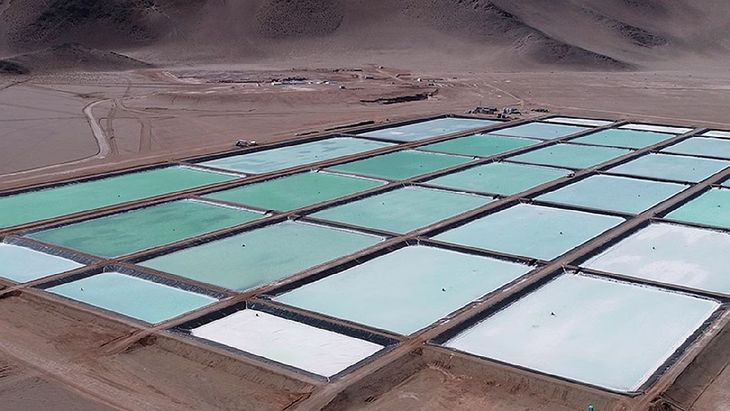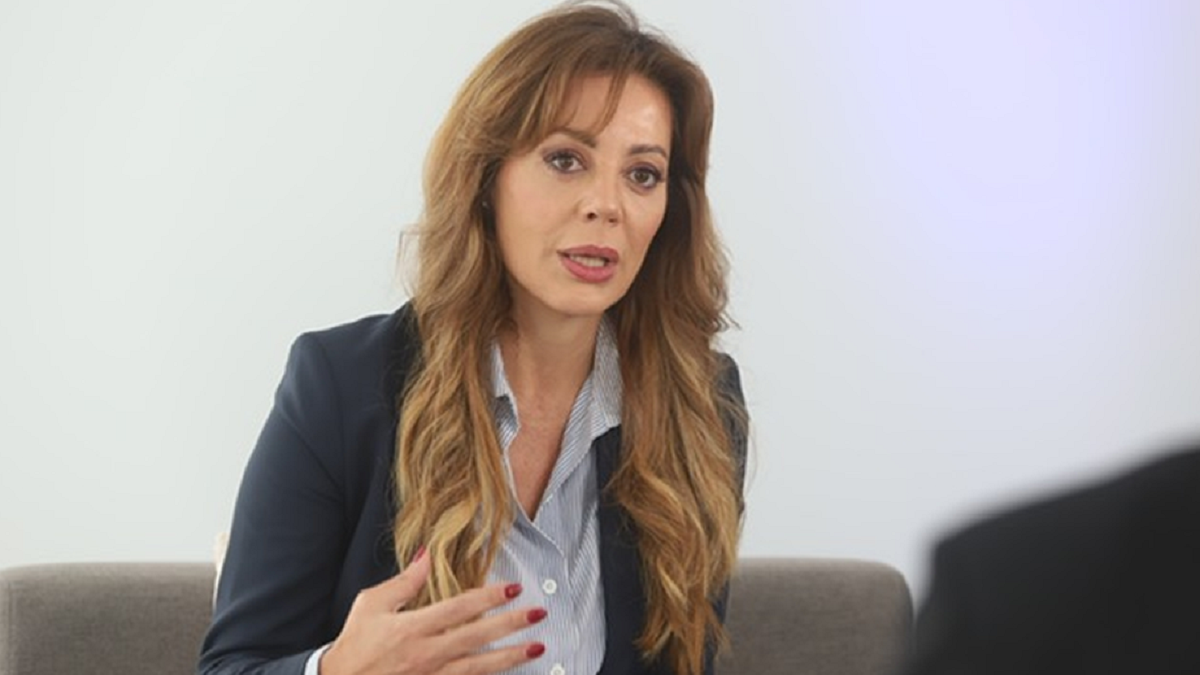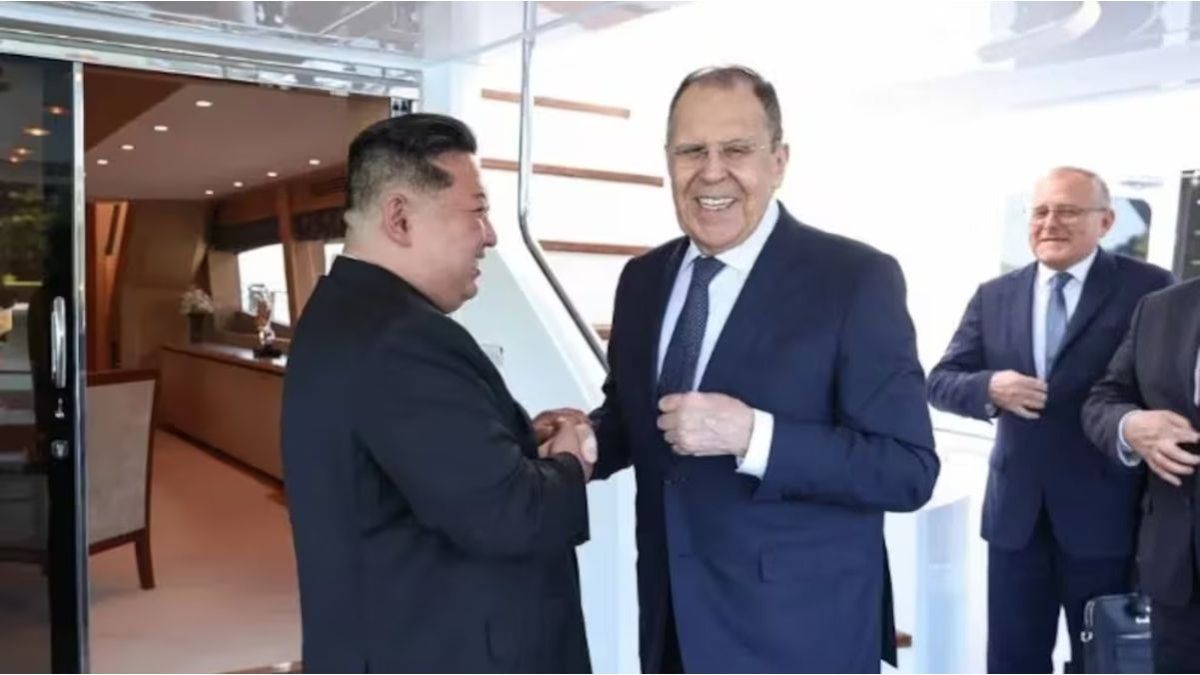In turn, the representative of the Lithium Roundtable put the discussion between environment and mining in check. “The sustainable development It does not necessarily imply the concept of preservation, but rather that we have the responsibility to develop our resources, both mining as well as oil and gas, in a sustainable manner.
“It is a sector that brings high quality employment and supplier development,” he said, before concluding: “This debate must take place throughout Argentina. We have to move from having mining provinces to being a mining country.”
Meanwhile, Ramirez considered that there is “a fundamental point which is the value chain” and added: “Today we are talking about mining in terms of producing a product that can be used as an input for other products at an international level. It seems to me that the great challenge is not only to assemble, explore and produce, but also the interrelation in the productive matrix of the different value chains, whether it is lithium, gold or something else.”
“Today our main macroeconomic problem is the lack of dollars“Diversification, not only depending on the agricultural sector, but starting with oil, gas and also the mining sector as part of attracting exports, seems to me to be a fundamental point,” he said.
At the same time, Rajzman assured that “We have the projects already developed and ready to start investing,” but he considered that “it is a challenge because we have to provide the macroeconomic conditions and the general business conditions so that companies can take that final step in the entire scale of efforts they have been making in the exploration stages, project development, sizing the plants, operational capacities.”
The importance of lithium and its value chain
When asked about the lithium value chain, Ramírez said that “the sodium carbonate (Soda Ash) It represents 41% of the cost, meaning it is a fundamental input for the extraction of lithium carbonate, which is the previous step to forming what we know as lithium.”
In this regard, he indicated that “sodium carbonate worldwide is fundamentally divided into the natural part of sodium carbonate, which is produced mainly in United States, Türkiye and Botswana, and the synthetic one” and added: “In Argentina we have Alcalis de la Patagonia (ALPAT) currently produces 250,000 tons of carbonate and has an investment project to increase that level to 550,000 tons in 2027.”
“Today we are putting a lot of focus on generating dollars that do not come only from an input, but from a finished product. In that sense, the value chain and ALPAT’s participation within the lithium chain, being an Argentine company, generates a very positive impact on cost reduction, because most companies import from the US and Türkiye, which makes things more expensive,” he explained.
“With an improvement in everything related to productive infrastructure, what you will generate is a reduction in the value chain to generate the final good, which in this case would be lithium,” he summarized.
In turn, Royon pointed out that “there is a lot of discussion about added value in the lithium industry” and clarified that “although this discussion automatically installs the idea of electric cars and of the batteries, me I would like to clarify that adding value to the lithium chain does not only mean thinking about batteries.”
“It means not only for lithium, but for all mining, the Development of a robust chain of suppliers for both products and services in Argentina, “We are a country with a high quality workforce, industry and technology. We are a very mature country, with a solid industrial framework for this to happen,” he countered.
panel444.jpg
During the panel, entitled “Analysis, challenges and opportunities of the mining industry” and moderated by the Editor in Chief of the Buenos Aires Herald, Estefanía Pozzo, the focus was on the potential of the sector to become an even more relevant player in the Argentine economy.
On the other hand, the representative of the Lithium Roundtable pointed out that “mining is an industry linked to foreign investment”, so she considered that “it must have as an inherent part of its sustainability the development of national and local suppliers”.
“The discussion about whether there are batteries is clearly a path to explore, but with Argentina’s lithium production capacity, this discussion ends up being minor,” he clarified.
In this regard, Rajzman added that “The stage of highest added value in mining is precisely in the mining stage” and clarified: “If one goes to a mining operation, before that exploration and detecting that deposit and carrying out the work, sizing how much can be produced and building the plant and all the necessary investment, before that material has no value whatsoever, it is a piece of land with no value at all.”
“The greatest added value is generated precisely in the mining stage. Which does not mean that it is not a starting point to continue adding value and it is the opening of a lot of opportunities for suppliers. For example, in the Chilean case, after many years of development they have managed to have a chain of suppliers with a certain complexity, with a certain productive density, and today the mining goods and services sector exports 400 million dollars,” he said and compared that “Argentina has a much denser productive structure than Chile in many aspects, but less tradition in mining. “So, the growth and development of the mining sector is the starting point.”
Articulation between the public and private sectors
Showing off his role as former Secretary of Mining, Royon considered that “there is a good relationship” between the national and provincial governments. “I think that we must also look closely at the constitution of the Lithium Table, of the Copper Table. Argentina and the productive interior have a lot to offer our country in this type of industry,” he said.
In this regard, he warned: “The Patagonian governors will clearly mark a political position with respect to the development of natural resources. Because this discussion about copper, about whether there is a refinery, about lithium, about whether there is a battery or an electric car, ends up being a very amba-centric discussion, if you will.
Lithium Salar de Vida Catamarca Arcadium.jpg

“There are around 5,000 jobs in the lithium industry. It may not seem important, but it is essential for Salta, Jujuy or Catamarca. We need to have this perspective from the territory and have a political debate on the development of our resources,” he added.
Meanwhile, Rajzman supported this idea by pointing out: “If we look at the distribution of the population in Argentina, a third of the population is in Buenos Aires, Rosario and Córdoba. When we see the number of jobs generated in the Puna, we say that mining has a contribution to the economy. decentralization and federalization of the country.”
“Added to this are the opportunities for suppliers to provide goods and services to mining companies. For every job in a mining operation, there are at least two indirect jobs,” he added.
Promote mining to not depend solely on agriculture
On the other hand, Ramírez proposed to talk about mining “as added value, not as an input.” “Whether it is gold, copper or lithium, what you can provide is added value and add to a productive matrix that today depends solely on an agro-export sector that is only dependent on time,” he said and recalled that “a flood or a drought brings problems.”
“So, this opening or this diversification in the productive matrix, Whether we are talking about agribusiness or the production chain, whether it is automotive or mining, it will allow you to create certain buffers and not be dependent on the weather at a given time,” he stressed.
In this regard, Rajzman clarified that “the efforts in mining are not instantaneous either,” highlighting that “A mining operation is a long-term project, “Since from the moment exploration begins until a mine is finally put into operation, 10 to 15 years pass.”
“Even if we had the project, as is the case now that we have six, building it takes between three and four years in positive scenarios. We have to stop thinking like in the agricultural model where we plant and after a short time we already have the little plant, but rather that mining is a long-term sector,” he compared.
“Mining is not going to save us, we are a big country, it has to be one more sector, but it is part of the solution,” Royon insisted and pointed out: “Today the world is facing a process of energy transition. This is an opportunity for development in Argentina. We must know how to take advantage of this window of opportunity and transform these resources into wealth to leave a better future for future generations.”
The importance of infrastructure
Regarding infrastructure, the former Secretary of Mining considered that “Argentina has it all” and listed: “It has the second largest reserve of unconventional gas in the world, with gas being the fuel of the energy transition; it has the best places to produce solar energy and the best places in Patagonia to make wind energy, it has a resource of the highest quality.”
“Without minerals, there is no possible energy transition. Argentina has lithium, it has copper, it has 80% of its territory unexplored, so we have everything we need. And in that transition window, The other advantage we have is that we have the way to produce both minerals and gas with a lower carbon footprint,” he highlighted.
“In the Puna, the energy infrastructure is a challenge, both for a high-voltage line and for gas pipelines to feed the mining industry and to enable all the solar parks that could be injecting energy into our system,” he added.
Rajzman called for improving the road infrastructure. “It is essential to build train lines that are in good condition and have the capacity to transport all the volume that will be moved in areas that do not have a productive tradition of this magnitude, such as the Northwest or Cuyo, which will require competitiveness in the entire logistics chain,” he said.
He also considered that “having a good electrical infrastructure will also allow the evacuation of the new energy generated in the project area.”
Source: Ambito
I am a 24-year-old writer and journalist who has been working in the news industry for the past two years. I write primarily about market news, so if you’re looking for insights into what’s going on in the stock market or economic indicators, you’ve come to the right place. I also dabble in writing articles on lifestyle trends and pop culture news.




